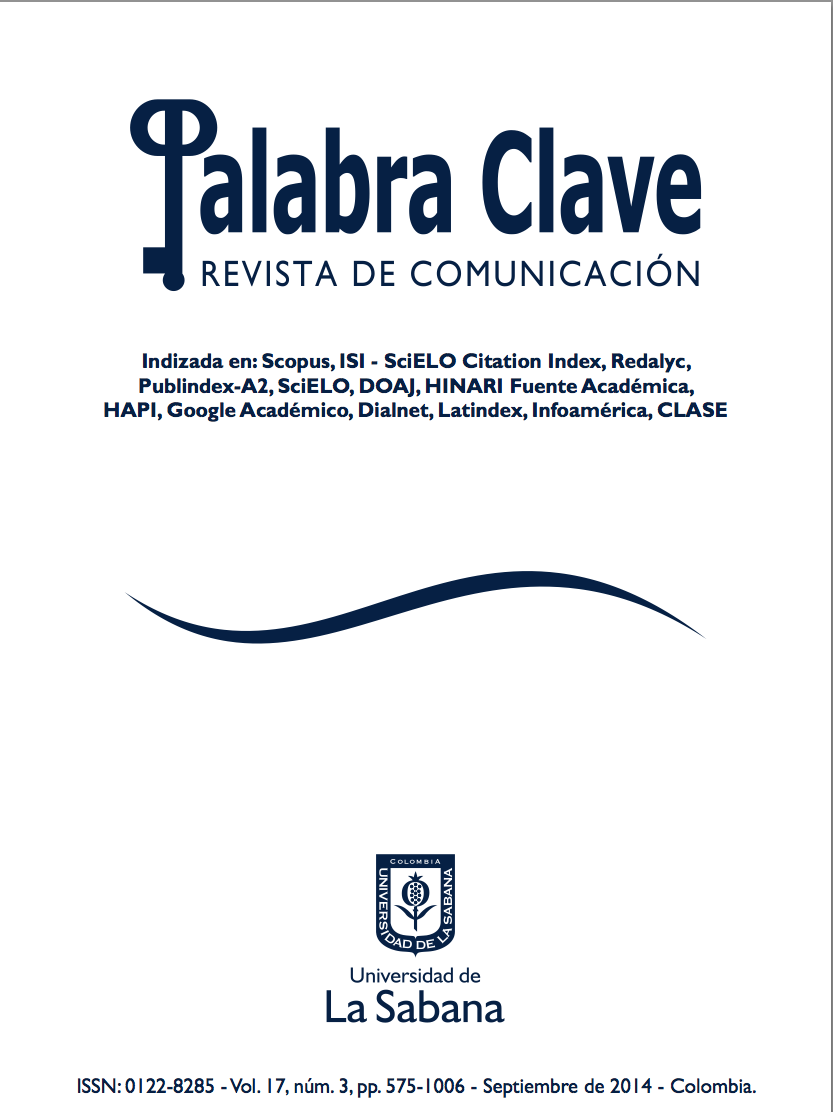The Image of Immigration in Fiction Broadcast on Prime-time Television in Spain
Keywords:
Mass communication, communication impact, intercultural communicationAbstract
The article describes the results of a content analysis of the image of immigrants portrayed in prime- time television fiction in Spain, based on the cultivation theory and research on ethnic minorities in the media. The data indicates immigrant characters clearly are underrepresented and tend to be depicted in a negative way that reinforces stereotypes about immigrants (e.g., performing criminal activities). The results are discussed in relation to the role television fiction could play in reducing prejudice through mediated intergroup contact (Park, 2012).
Downloads
Download data is not yet available.
Published
2014-01-27
How to Cite
Barrios, I. M., Ortega, F., & Frutos, F. J. (2014). The Image of Immigration in Fiction Broadcast on Prime-time Television in Spain. Palabra Clave, 17(3), 589–618. Retrieved from https://palabraclave.unisabana.edu.co/index.php/palabraclave/article/view/2
Issue
Section
Articles
License
1. Proposed Policy for Journals That Offer Open Access
Authors who publish with this journal agree to the following terms:
- Authors retain copyright and grant the journal right of first publication with the work simultaneously licensed under a Creative Commons Attribution License that allows others to share the work with an acknowledgement of the work's authorship and initial publication in this journal.





